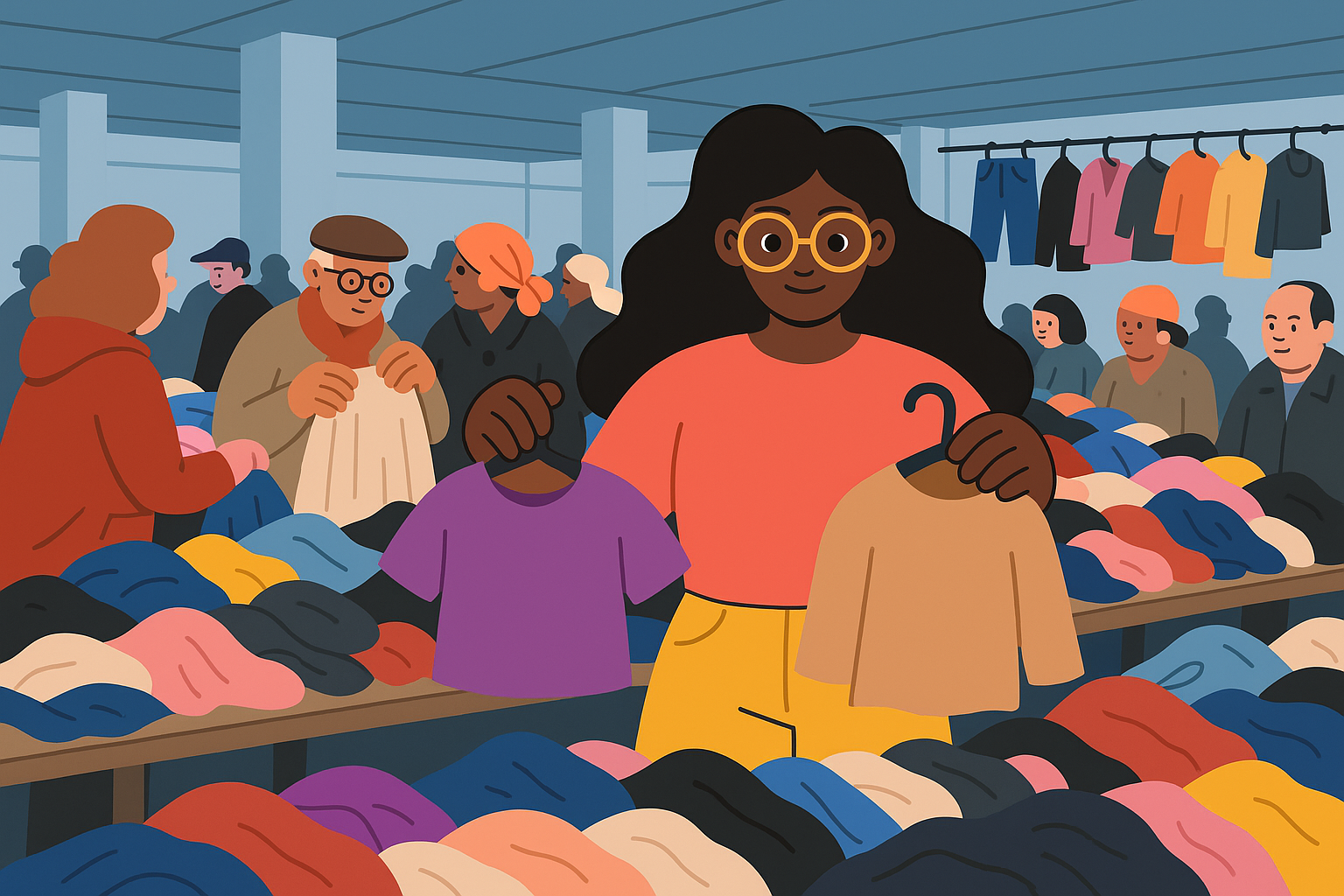Is second-hand clothing the solution to fast plastic fashion?
Fast fashion is flooding our stores and online platforms with ultra-cheap clothing. Much of this is made from plastic-based fibers like polyester. What many people don’t know is that around 70% of our clothing is made from synthetic materials. Every wash releases invisible microplastics, which end up in the environment – and in our bodies. Luckily, a better option is within reach: second-hand fashion. Whether you buy on Vinted, Marktplaats, at a flea market or in your local thrift store, choosing second-hand today helps counter the fast plastic fashion crisis. This article explains why it matters, how to shop second-hand more consciously, and what kind of impact you can make.
The dark side of fast plastic fashion
Fast fashion causes pollution not just through overproduction and waste, but also because of its materials. About 70% of our clothing is plastic – synthetic fibers like polyester, nylon, and acrylic. These fibers account for around 35% of global microplastic pollution in our oceans. Wearing and washing these clothes releases tiny fibers into the air, water, and our bodies. Scientists are raising red flags: microplastics have been linked to inflammation, hormone disruption, fertility decline, and even cancer.
Want to make smarter, more conscious wardrobe choices? Download the free Fashion Guide from Plastic Soup Foundation.
Is second-hand clothing truly more sustainable?
Second-hand clothing significantly extends the lifespan of garments. But does it really replace new purchases? Not always. Due to the so-called rebound effect, second-hand purchases only replace about 50% of new ones. Still, every second-hand item saves roughly 50% of the environmental impact compared to buying new. Especially when we buy more consciously, second-hand fashion becomes a powerful tool in a circular economy.
Practical tips for conscious second-hand shopping
Your clothing choices matter, even the small ones:
- Shop locally: visit thrift shops nearby or use distance filters on Vinted to reduce transport emissions.
- Check the labels: choose natural fabrics like cotton, wool, or linen to avoid releasing microplastics.
- Bundle your purchases: buy multiple items from the same seller to minimize packaging and shipping.
- Repair & reuse: small repairs can give clothing a second life and reduce waste.
Want to know more? Solutions to plastic fast fashion pollution.
The downside of second-hand: challenges and solutions
While second-hand clothing offers many benefits, it’s not a perfect solution. There are a few pitfalls that can reduce its positive impact. Fortunately, there are smart ways to address them – so your second-hand choices truly make a difference.
Lower quality due to fast fashion
Thrift stores report a decline in the quality of donated clothes. Fast fashion items are often made so poorly that they can’t be resold. This weakens the second-hand supply chain and undermines its sustainable potential.
Vintage with a carbon footprint
Some second-hand clothing is imported from far away, adding unnecessary CO₂ emissions. Always check where your clothes come from, and prioritize local or national sellers.
Preventing the rebound effect
Second-hand fashion can sometimes feel like a free pass to shop more. But that undermines its purpose. Stick to a wish list and only buy what you truly need.
What can you do?
Second-hand clothing helps reduce plastic pollution and cuts CO₂ emissions by around 50% compared to new clothing. By choosing local, durable, and low-impact items, you make a real difference.
- Advocate for stricter laws and regulations that push companies to become more sustainable.
- Support our Plastic Fashion campaign financially. Plastic won’t disappear on its own. We campaign, do research, and fight for a strong Global Plastic Treaty.
- Let second-hand be your alternative – not just an add-on. Buy with intention.
- Spread the word. The more people choose slow fashion, the faster we can phase out fast fashion.
And remember: the more consciously we consume, the sooner we change the norm together.
Join us today. Choose second-hand and help us stop Fast Plastic Fashion!



.png)


